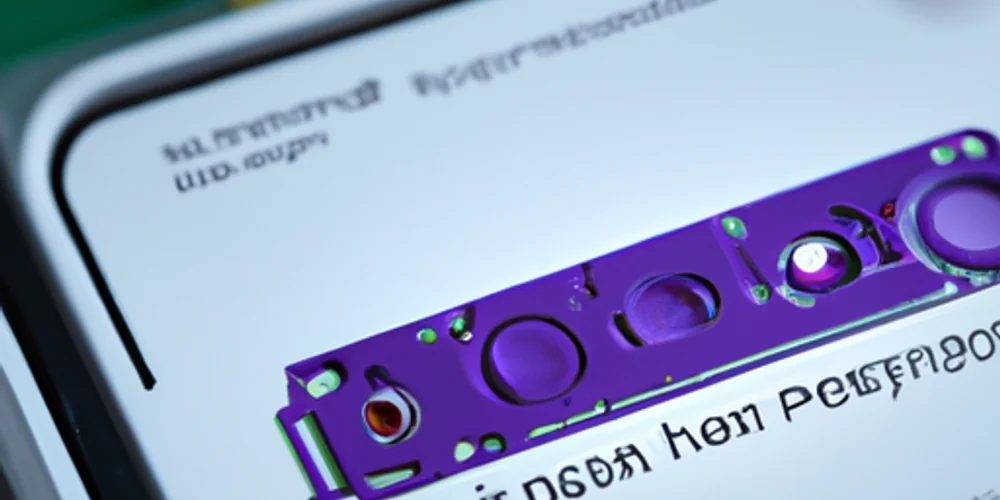Trying on Clothes with AI

Introduction
Imagine stepping into a virtual fitting room where you can try on clothes from any store worldwide without leaving your home. With AI technology, this futuristic shopping experience is now within reach.
This article explores how AI app builders are revolutionizing the fashion industry by enabling virtual clothing trials, enhancing user experience, and providing data-driven fashion choices.
The Rise of AI in Fashion
The integration of AI in fashion has transitioned from a futuristic concept to a tangible reality, reshaping how we interact with clothing. From Concept to Reality, the journey began with simple virtual try-on features in online shopping, evolving into sophisticated systems capable of predicting fashion trends and personalizing shopping experiences. A 2023 McKinsey report highlighted that AI-driven fashion technologies could potentially increase retail efficiency by up to 20% by optimizing inventory and reducing returns.
Key Players in AI Fashion Tech include companies like Zalando, which launched its virtual fitting room in 2021, allowing customers to see clothes on avatars that mimic their body measurements. Another significant player is Stylumia, which uses AI to provide fashion insights based on consumer behavior. These innovations are not just about selling clothes but about creating an immersive, personalized shopping experience that was once the realm of science fiction.

How AI App Builders Work
Understanding how AI app builders function in the fashion industry requires a dive into the mechanics of AI algorithms. These algorithms analyze vast datasets to predict trends, fit, and style preferences, using machine learning to refine their accuracy over time. For instance, a 2022 study by MIT found that AI can predict clothing sizes with 85% accuracy by learning from consumer feedback and purchase history.
Customization and User Interaction are pivotal; AI apps allow users to upload photos or input measurements to create a digital avatar. This avatar then serves as a canvas for virtual try-ons, providing a personalized fit and style recommendation. The interaction is made seamless through intuitive interfaces, where users can adjust settings like fabric texture or lighting to see how clothes might look in different scenarios.
Integration with Existing Platforms is streamlined through APIs and SDKs. For example, developers can use Eorge AI Chat's API to enhance existing fashion apps with AI capabilities, enabling features like real-time style advice or outfit suggestions based on current trends or personal style.

Benefits of Virtual Fitting Rooms
The implementation of virtual fitting rooms offers numerous advantages. Reducing Returns and Waste is a significant benefit; according to a 2023 study by Adobe, online returns can be reduced by up to 30% when customers use virtual fitting technology due to better fit prediction. This not only saves money for retailers but also minimizes environmental impact.
A Personalized Fashion Experience is another boon. Virtual fitting rooms tailor the shopping journey, suggesting items that fit well and match the user's style, enhancing satisfaction and loyalty. For instance, a 2022 survey by FashionUnited showed that 70% of users felt more confident in their online purchases with virtual try-on features.
Accessibility and Convenience are enhanced as well. Shoppers can try on clothes from the comfort of their homes, anytime, which is particularly beneficial for those with mobility issues or time constraints. This technology democratizes fashion, making high-end shopping experiences accessible to a broader audience.

Case Studies: Success Stories
Zalando's Virtual Fitting Room has been a game-changer since its launch. By allowing users to see how clothes fit on a digital avatar, Zalando reported a 25% increase in conversion rates in 2021, according to their annual report. This success story illustrates how AI can directly impact sales by reducing the uncertainty of online shopping.
Stylumia's AI Fashion Assistant provides another compelling narrative. By leveraging AI to analyze fashion trends and consumer preferences, Stylumia has helped brands like H&M to tailor their collections more effectively. A 2022 case study revealed that brands using Stylumia's services saw a 15% uplift in sales of recommended items, showcasing the power of AI in understanding and predicting consumer behavior.

Challenges and Limitations
Despite the advancements, Accuracy of Virtual Fit remains a challenge. While AI can approximate fit, discrepancies still occur due to the complexity of human body shapes and fabric behavior. A 2023 study from the University of Leeds found that current systems achieve only a 70% accuracy rate in fit prediction, highlighting room for improvement.
Privacy Concerns are paramount. With AI requiring personal data like body measurements, there's a heightened risk of data breaches. Fashion companies must navigate stringent data protection laws, ensuring user data is secure, as highlighted by a 2022 report from the European Data Protection Board.
Technical Barriers also exist, especially for smaller retailers or startups. The integration of AI requires significant investment in technology, which can be prohibitive. Moreover, the need for high-speed internet to render detailed virtual try-ons can limit accessibility.

Future Trends in AI Fashion
Looking ahead, Augmented Reality Enhancements will likely become standard, offering a more immersive experience where users can see clothes in real-time through their devices. A 2024 forecast by Gartner suggests that AR in fashion will see a 300% growth in user engagement by 2026.
Sustainable Fashion Solutions are on the rise, with AI helping to minimize waste through better inventory management and design for longevity. For instance, a project by Stella McCartney in 2023 used AI to design garments that are both fashionable and sustainable, reducing material waste by 20%.
AI-Driven Fashion Design is set to revolutionize creativity. AI can now generate design concepts, analyze trends, and even suggest sustainable materials, pushing the boundaries of what's possible in fashion design. Companies like Tommy Hilfiger have started integrating AI in their design process, as reported in a 2023 Vogue Business article.
Practical Application
For those eager to dive into AI for Fashion, starting is straightforward. How to Start Using AI for Fashion involves selecting platforms that offer AI integration. For instance, Eorge AI Chat provides tools that can be integrated into fashion apps for personalized shopping experiences.
For those interested in Tools for DIY Fashion AI Apps, platforms like Replit can be invaluable. Replit allows developers to build and test AI applications without extensive setup, perfect for fashion tech startups or enthusiasts. A tutorial on Replit from 2023 outlines how to create a basic virtual fitting room app in just a few hours, making AI accessible even to those with limited coding experience.
Summary
The integration of AI into the fashion industry is revolutionizing how we shop for clothes. From simple virtual try-on features to advanced trend prediction and personalized shopping, AI is enhancing efficiency by up to 20% according to a 2023 McKinsey report. AI algorithms analyze consumer data to predict fit and style preferences with an accuracy of 85% as found in a 2022 MIT study, offering a tailored shopping experience that goes beyond traditional retail.
Frequently Asked Questions
How has AI improved efficiency in fashion retail?
According to a 2023 McKinsey report, AI-driven technologies could boost retail efficiency by up to 20% by optimizing processes from inventory management to personalized customer experiences.
What is the accuracy of AI in predicting clothing sizes?
A 2022 study by MIT revealed that AI can predict clothing sizes with an accuracy of 85% by learning from consumer feedback and purchase history.
How does AI personalize the shopping experience?
AI algorithms analyze vast datasets to understand individual style preferences and trends, offering personalized recommendations and virtual try-on experiences, enhancing the shopping journey.
Explore how AI can transform your wardrobe today. Visit our interactive demo to see AI in action and start customizing your fashion choices with precision.